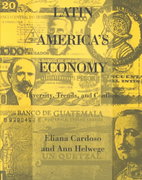Chapter 4: Applications of Elasticity (including Taxes) Q1: The market for kumquats is represented by Q = 2,400P - 1,000 and Q = 20,000 - 1,600P where Q is kilograms of kumquats and P is the price of kumquats per kilogram. a) What are the equilibrium price and equilibrium quantity in this market? Show your calculations. b) How much total revenue do kumquat farmers earn at the market equilibrium? Show your calculations. c) Suppose the government imposes a quota of 8,000 kilograms in the market for kumquats. Is this quota binding on the market? Explain. d) What is the new equilibrium price of kumquats as a result of the quota of 8,000 kilograms? Show your calculations. e) What is the new total revenue as a result of the quota of 8,000 kilograms? Show your calculations. f) Is demand elastic or inelastic when the price is between the original equilibrium price and the new equilibrium price? Explain or show your calculations. g) Are kumquat farmers in favour of the government's quota of 8,000 kilograms? Explain. Hint: Kumquat farmers care about profit, which equals total revenue - total cost. h) Instead of a quota of 8,000 kilograms, suppose the government imposes a quota of 9,200 kilograms in the market for kumquats. Is this quota binding on the market? Explain. i) What is the new equilibrium price of kumquats as a result of the quota of 9,200 kilograms? Show your calculations. j) What is the new total revenue as a result of the quota of 9,200 kilograms? Show your calculations. k) Is demand elastic or inelastic when the price is between the original equilibrium price and the new equilibrium price in i)? Explain or show your calculations. l) Are kumquat farmers in favour of the government's quota of 9,200 kilograms? Explain. Hint: Kumquat farmers care about profit, which equals total revenue - total cost. Q2: The market for unskilled labour is represented by Q = 1,200 - 40w and Q = 160w - 800 where Q is the number of workers per hour and w is the hourly wage rate. a) What are the equilibrium wage rate and equilibrium quantity in this market? Show your calculations. b) How much total employment income do workers earn at the market equilibrium? Show your calculations. c) Suppose the government decides to impose a minimum wage of $14/hour in this market. Is this minimum wage binding on the market and if yes, what is the new total employment income of workers? Show your calculations. d) Do workers as a group support the government's minimum wage of $14/hour? Explain. e) Suppose after imposing a minimum wage of $14/hour, the government decides to increase it to $18/hour. What is the new total employment income of workers? Show your calculations. f) Is demand in this market elastic or inelastic when the wage rate is between $14/hour and $18/hour? Explain. g) Do workers as a group support the government's increase in the minimum wage from $14/hour to $18/hour? Explain. Q3: a) What are the equilibrium price and the equilibrium quantity in the market shown in the following graph? b) Suppose the government imposes a tax of $8/unit of the product in this market. What type of tax is this: a specific tax or an ad valorem tax? c) What are the new equilibrium price and the new equilibrium quantity in this market after the government imposes the tax? Explain. Hint: The new equilibrium price is NOT $27. d) How much total revenue does the government collect from the tax? Show your calculations. e) What amount of the tax falls onto the sellers? Show your calculations. f) Based on your answer to the previous question, which side of the market is more elastic: demand or supply? Explain. Q4: The equilibrium price and equilibrium quantity in a market are respectively $135/unit and 420 units. Due to the imposition of a tax of $21/unit, the new equilibrium price and new equilibrium quantity are respectively $141/unit and 380 units. a) Does total revenue increase or decrease for the sellers AFTER remitting the tax AND by how much does total revenue change? b) How much total revenue does the government collect from the tax? c) Which side of the market is less elastic: demand or supply? How do you know? Explain. Q5: Beginning on July 1, 2020, the BC Government will impose a 7% sales tax on carbonated beverages with sugar. a) What type of tax is this: a specific tax or an ad valorem tax? b) If the goal of the BC Government is to increase the cost of carbonate beverages with sugar to consumers as much as possible, does the BC Government want demand to be more inelastic than supply or supply to be more inelastic than demand? Explain. c) If the goal of the BC Government is to make as much total revenue from the tax as possible, does the BC Government want demand to be elastic or inelastic? Explain. d) If the goal of the BC Government is to get people to reduce their consumption of sugar as much as possible, does the BC Government want demand to be elastic or inelastic? Explain. Q6: What are the two situations where buyers in a market bear 100% of a specific tax on the product in that market? Show each of these situations using a properly-labeled demand and supply graph. Make sure that your graph is carefully drawn. Hint: Read your overheads







